Related Research Articles

The Irish Republican Army was an Irish republican revolutionary paramilitary organisation. The ancestor of many groups also known as the Irish Republican Army, and distinguished from them as the "Old IRA", it was descended from the Irish Volunteers, an organisation established on 25 November 1913 that staged the Easter Rising in April 1916. In 1919, the Irish Republic that had been proclaimed during the Easter Rising was formally established by an elected assembly, and the Irish Volunteers were recognised by Dáil Éireann as its legitimate army. Thereafter, the IRA waged a guerrilla campaign against the British occupation of Ireland in the 1919–1921 Irish War of Independence.

The Irish War of Independence or Anglo-Irish War was a guerrilla war fought in Ireland from 1919 to 1921 between the Irish Republican Army and British forces: the British Army, along with the quasi-military Royal Irish Constabulary (RIC) and its paramilitary forces the Auxiliaries and Ulster Special Constabulary (USC). It was part of the Irish revolutionary period.

The Auxiliary Division of the Royal Irish Constabulary (ADRIC), generally known as the Auxiliaries or Auxies, was a paramilitary unit of the Royal Irish Constabulary (RIC) during the Irish War of Independence. It was founded in July 1920 by Major-General Henry Hugh Tudor and made up of former British Army officers, most of whom came from Great Britain and had fought in the First World War. Almost 2,300 served in the unit during the conflict. Its role was to conduct counter-insurgency operations against the Irish Republican Army (IRA), acting mainly as a mobile striking and raiding force. It operated semi-independently of the RIC and was mainly deployed to southern and western regions where fighting was heaviest.

Thomas Bernardine Barry, better known as Tom Barry, was a prominent guerrilla leader in the Irish Republican Army (IRA) during the Irish War of Independence and the Irish Civil War. He is best remembered for orchestrating the Kilmichael ambush, in which he and his column wiped out a 18-man patrol of Auxiliaries, killing sixteen men.
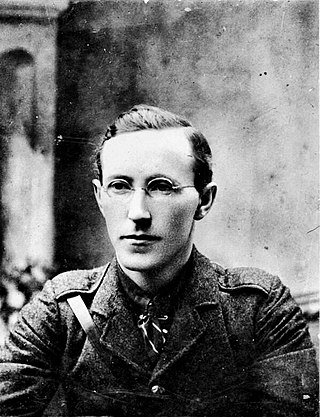
William Fanaghan Lynch was an Irish Republican Army officer during the Irish War of Independence of 1919–1921. During much of the Irish Civil War, he was chief of staff of the Irish Republican Army. On 10 April 1923, Lynch was killed whilst trying to escape an encirclement by Free State troops in south Tipperary.

Thomas Hales was an Irish Republican Army (IRA) volunteer and politician from West Cork.
Liam Deasy was an Irish Republican Army officer who fought in the Irish War of Independence and the Irish Civil War. In the latter conflict, he was second-in-command of the Anti-Treaty forces for a period in late 1922 and early 1923.
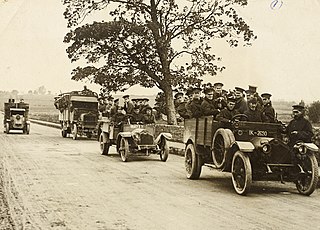
This is a timeline of the Irish War of Independence of 1919–21. The Irish War of Independence was a guerrilla conflict and most of the fighting was conducted on a small scale by the standards of conventional warfare.
Thomas McEllistrim was an Irish Fianna Fáil politician who served as a Teachta Dála (TD) from 1923 to 1969. He was a military activist in the period from 1916 to 1923.
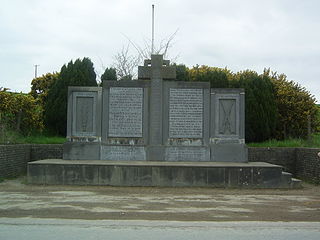
The Crossbarry ambush or Battle of Crossbarry occurred on 19 March 1921 and was one of the largest engagements of the Irish War of Independence. It took place near the small village of Crossbarry in County Cork, about 20 km south-west of Cork city. About a hundred Irish Republican Army (IRA) volunteers, commanded by Tom Barry, escaped an attempt by about 1,200 British troops to encircle them. During the hour-long battle, ten British troops and three IRA volunteers were killed.

The Kilmichael Ambush was an ambush near the village of Kilmichael in County Cork on 28 November 1920 carried out by the Irish Republican Army (IRA) during the Irish War of Independence. Thirty-six local IRA volunteers commanded by Tom Barry killed sixteen members of the Royal Irish Constabulary's Auxiliary Division. The Kilmichael ambush was politically as well as militarily significant. It occurred one week after Bloody Sunday and marked an escalation in the IRA's campaign.
Charles Hurley was Officer Commanding of the 3rd Cork Brigade of the Irish Republican Army during the Irish War of Independence (1919–1921)
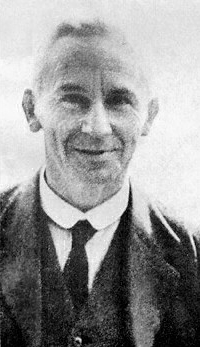
Seán O'Hegarty was a prominent member of the Irish Republican Army in County Cork during the Irish War of Independence. He served as O/C of the Cork No. 1 Brigade of the IRA after the deaths of Tomás Mac Curtain and Terence MacSwiney.
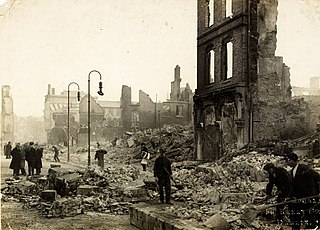
The burning of Cork by British forces took place on the night of 11–12 December 1920, during the Irish War of Independence. It followed an Irish Republican Army (IRA) ambush of a British Auxiliary patrol in the city, which wounded twelve Auxiliaries, one fatally. In retaliation, the Auxiliaries, Black and Tans and British soldiers burned homes near the ambush site, before looting and burning numerous buildings in the centre of Cork, Ireland's third-biggest city. Many Irish civilians reported being beaten, shot at, and robbed by British forces. Firefighters testified that British forces hindered their attempts to tackle the blazes by intimidation, cutting their hoses and shooting at them. Two unarmed IRA volunteers were also shot dead at their home in the north of the city.

Guerrilla Days in Ireland is a book published by Irish Republican Army leader Tom Barry in 1949. The book describes the actions of Barry's Third West Cork Brigade during the Anglo-Irish War, such as the ambushes at Kilmichael and Crossbarry, as well as numerous other less known attacks made by the Brigade against the British Army, Black and Tans, Auxiliary Division and the Royal Irish Constabulary. The text was originally serialised in The Irish Press in 1948 before being published as a book.
The Tooreen ambush was an ambush carried out by the Irish Republican Army (IRA) on 22 October 1920, during the Irish War of Independence. It took place near Roberts Farm, Tooreen, near Ballinhassig in County Cork. The IRA ambushed two lorries of British soldiers, killing three and wounding four others. The British surrendered and their weapons and ammunition were seized by the IRA. Later that night, British soldiers went on a rampage in nearby Bandon.
The Clonmult ambush took place on 20 February 1921, during the Irish War of Independence.
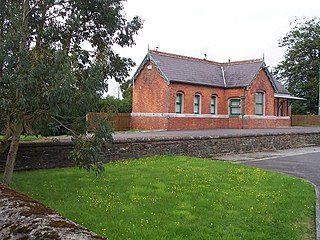
The Upton train ambush took place on 15 February 1921, during the Irish War of Independence. The Irish Republican Army (IRA) mounted an attack on a train carrying British soldiers at Upton, County Cork. The action was a disaster for the IRA; three of its volunteers were killed, two wounded and one captured. Six British soldiers were wounded, three seriously. At least eight civilian passengers were killed and ten wounded in the crossfire.
Maurice Donegan was an officer in the Irish Republican Army (IRA) during the Irish War of Independence, commanding the 5th Bantry Battalion of the Cork III Brigade. Following the Irish Civil War, he unsuccessfully contested the 1923 Irish general election as a candidate with Sinn Féin in the Cork West constituency.
The Rathcoole ambush was an ambush carried out by the Irish Republican Army (IRA) near the village of Rathcoole in County Cork on 16 June 1921 during the Irish War of Independence. Under the command of Paddy O'Brien, the IRA's 2nd Cork Brigade attacked an armed convoy of the Auxiliary Division returning to their barracks in Millstreet after collecting supplies. After 50 minutes of intense fighting, the IRA managed to inflict heavy casualties on the Auxiliaries before a shortage of ammunition forced them to withdraw.
References
- ↑ Cronin, Maurice (October 2009). "Hurley, Charles (Charlie)". Dictionary of Irish Biography. Royal Irish Academy. doi:10.3318/dib.004167.v1 . Retrieved 9 December 2023.
- 1 2 White, Gerry (19 March 2021). "Crossbarry ambush: Taking battle to the empire". irishexaminer.com. Irish Examiner. Retrieved 9 August 2021.
- ↑ McGreevy, Ronan (15 October 2019). "Kilmichael ambush largest in War of Independence". irishtimes.com. Irish Times. Retrieved 9 August 2021.
- 1 2 O'Brien, Denis (1956). "Statement by Witness - Document No. W.S. 1.353 - Witness: Denis O'Brien, Adamstown, Ballinhassig, Co. Cork" (PDF). militaryarchives.ie. Bureau of Military History.
On the night of 31st December 1920, and again about mid-January 1921, Kilbrittain barracks R.I.C. was attacked, but, on each occasion, the attack proved abortive as the mines failed to explode
- ↑ Corkery, Jack (1947). Hart, Peter; Ó Conchubhair, Brian (eds.). The Fight at Burgatia House, Rosscarbery in Rebel Cork's Fighting Story, 1916-21. Ireland: The Kerryman. p. 146. ISBN 978-1-85635-644-2.
- 1 2 O'Callaghan, Con (July 2019). "The Fight At Burgatia House" (PDF). Cork Rebel Way. No. 1. p. 35. Retrieved 27 October 2021.
- ↑ Berresford Ellis, Peter (2007). Eyewitness to Irish History. John Wiley and Sons. pp. 247–249. ISBN 978-0-470-05312-6 . Retrieved 1 November 2009.